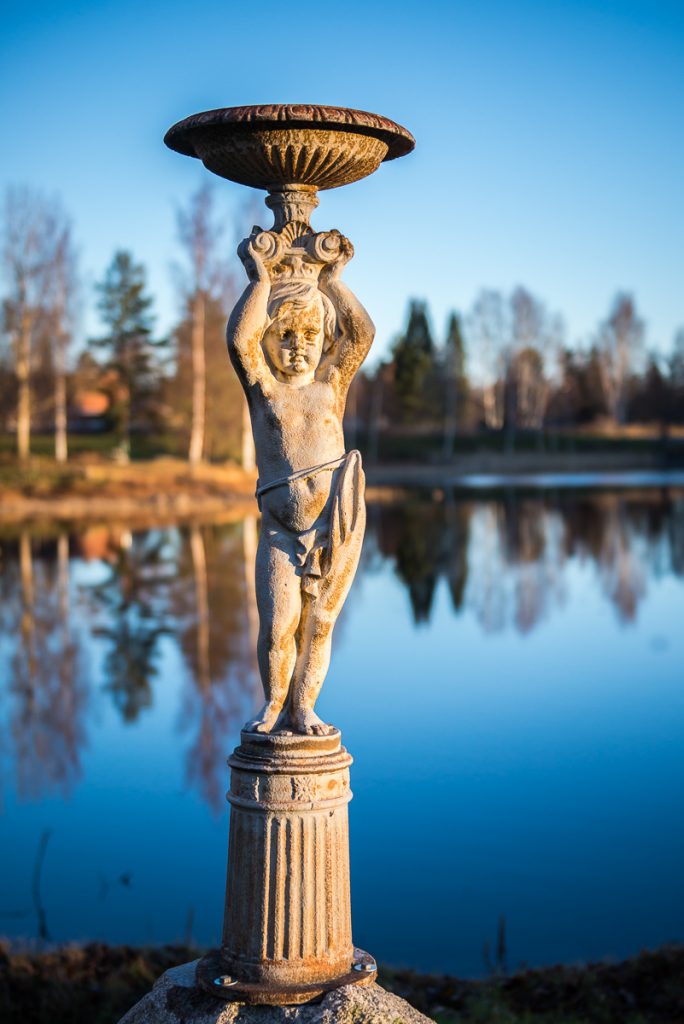Mänttä castle’s fountain sculpture
A cast-iron fountain sculpture from the Serlachius Museums’s object collection stands on Aleksanterin linna’s yard. The sculpture has originally decorated the courtyard of Mänttä castle. The mill founder Gustaf Adolf Serlachius let build the castle.
After moving to Mänttä, mill founder G. A. Serlachius resided a long time in a wooden house called the mill cottage near the Mäntänkoski Rapid. A building resembling a farmhouse was quite a modest home for an industrialist. Therefore Serlachius commissioned Swedish architect Melander to design a new house. The private residence of G. A. Serlachius’ family was completed in 1896. Due to its appearance, this red-brick building lated received the name Mänttä castle.
Mänttä castle stood on the beautiful grounds of the mill cottage. Instead of being demolished, the old building served as a part of the new building. Subsequently, Mänttä castle then had a decorative part in neo-gothic style made of red bricks and a board-clad old section freshened up with a light-coloured paint. The building stood near the rapid, in other words quite next to the industrial site. The narrow-gauge railway boarded its courtyard in the south by and a street in the north. The street remained between the mill and Koskelanlampi Pond. The worker’s quarters, or the so-called Pitkä pytinki (Long building) was next door to the castle on the east side in the 1850’s.
The industrialist received the Finnish honorary title of Commercial counsellor the same year the castle was completed. He managed to reside in the building for five years before he died in 1901. Subsequently, Gösta Serlachius and his family moved to the castle in 1913, one year after the industrialist’s wife Alice Serlachius’ death in 1912. The building was also in office use before it was the company demolished it in 1939.
In the old photographs from 1910-20’s, one can see it in the park of Mänttä castle. Plants surround it in the picture. In summer, the servants brought palms in wooden tubs to the park from inside. The window awnings finalised the villa-like appearance the house. Cast-iron fountain sculpture is a garden decoration, typical for its time: it depicts a naked putto holding a flat bowl. Nobody knows who purchased the sculpture. The photographs where the fountain appears date back to Gösta Serlachius’ time.
The sculpture’s phases from the time period after the company demolished Mänttä castle remain unclear. In the 1960’s or early 1970’s, the fountain found a new location at the factory site of G. A. Serlachius Oy, at the courtyard of Koskitalo. Koskitalo building is a water purification plant and office building of G. A. Serlachius Oy. It rose in 1960’s near the site where Mänttä castle used to stand on the Tehtaankatu street, opposite to the memorial of G. A. Serlachius. The company demolished Mänttä castle in 1939. The fountain sculpture was included in Serlachius Museums’ collection in 2014. Since Autumn 2015 it has been standing at Aleksanterin linna’s yard.
Milla Sinivuori-Hakanen
Curator


